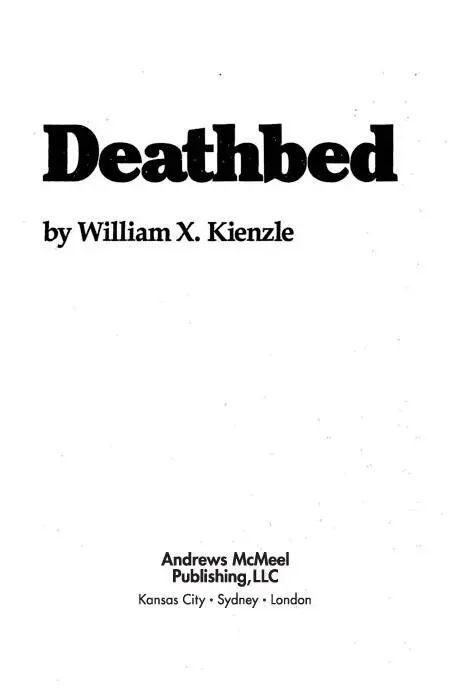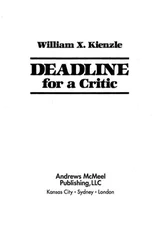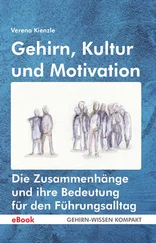

For Javan
1
Sister! Can you hear me? Can you hear me even though you are dead?
I am the one who killed you. But you must know that. By now, you must know all the answers.
It was a mistake. It was a mistake ever to have set myself on this course. But that is of little consolation to you. It is too late for consolation. And I must confess I am sorry. But what good does that do you? It is too late for sorrow.
You are dead and this unbearable pain in my head goes on.
It was all so useless.
With all my heart I wish I could change the course of these events. I wish I could change what has already happened. But of course no one can do that. No one can bring you back to life.
If I were to tell this story to someone—and I may very well be forced to do so—where would I start?
I suppose I would start where so many hospital stories begin. In the emergency room . . .
“There is no heartbeat.”
“Uh-huh.”
“I do not get any pulse.” Dr. Lee Kim pressed his fingers against the patient’s carotid artery.
“Uh-huh.” Kim need not have made the statement. Dr. Fred Scott could hear the long pauses between the monitor’s blips.
Nurses and other doctors were methodically cutting away the woman’s clothing. None of it had much value. As the last of her underclothes dropped to the floor, one of the EMS crew who had just delivered her to St. Vincent’s emergency department began external massage of her heart.
Scott aimed a small pocket flashlight into her unblinking eyes. “Pupils are dilated and fixed." Delicately, he flicked his index finger along her eyelash. No response. He knew it was hopeless.
Kim jammed a needle just below the clavicle to establish a subclavian line. He inserted a catheter and began the flow of chemicals intended to stimulate the heart. “Nothing,” he said, noting the absence of cardiac activity on the monitor. “No response.”
Still the uniformed man, one hand cupped over the other, continued to pump against her chest.
Kim removed the catheter and snapped off his rubber gloves. “Do you suppose the medical examiner will pass on this one?”
Scott smiled broadly. “Willie Moellmann is up to his ears with probable homicides. I can’t think he’ll want a little old lady with a likely cardiac arrest.” He removed his gloves.
The discarding of the gloves led the others in Trauma Room One to assume, correctly, that efforts to resuscitate the patient were ended. She would be registered “Dead on Arrival” and preserved in the hospital’s morgue until paperwork was completed and a mortician called for the body. Meanwhile, a nurse would inform the immediate family of her death.
“What’s goin’ on next door?” Scott stood tiptoe to see over the crowd in Trauma Two. Most of those in Trauma One, once their patient had been declared DOA, had moved to the adjoining room, partly to help and partly from curiosity. By now, slightly more than twenty staff members were crowded into the room.
Scott was tall enough to see most of the action. Which was fortunate, as there was no room for him inside the arena.
“What is it?” Scott asked of anyone willing to answer.
“Gunshot,” replied a nurse. “To the chest.”
Scott could see it. Just under the left breast: A small, neat hole; only a slight trickle of blood from the wound. They had cut away her clothing and were covering her with a hospital gown. She was conscious, able to communicate, and apparently young. That was the good news. But she was enormous. That was the bad news. If they had to go in after the bullet, those layers of fat would be of no help to the surgeon nor to her heart.
Scott became aware of someone standing beside him. It wasn’t one of the regular staff; the newcomer was too intent. He seemed to be scarcely breathing, as if viewing such a scene for the first time. Approximately Scott’s height, perhaps an inch or two taller, he wore a long white hospital-issue jacket, on the sleeve of which was a badge reading, “Pastoral Care Department.” Scott tilted his head to look through the bottom portion of his bifocals and make out the man’s identification tag.
“You’re Father Koesler, eh?” Scott offered his hand. He could not extend it. They were pressed too closely together.
“Yes,” Father Robert Koesler replied. “And you’re . . .” He tried to make out the other man’s ID, but the card had flipped over and only clear plastic was showing.
“Scott. Fred Scott.”
“You’re a doctor?”
Scott nodded and smiled. “Bless me, Father, for I have sinned. I’m in charge of this loony bin.”
“The entire hospital?”
“No, no. Thank God. Just Emergency.”
“Oh.”
“And you’re the new chaplain.”
“Well, temporary.”
“I know. You’re taking Father Thompson’s place while he goes on a well-deserved vacation.”
Koesler smiled. “News travels fast.”
“You bet. This is just a little Catholic hospital and everybody pretty well knows everybody else’s business.”
They were silent for a few moments, watching, as doctors, nurses, and technicians carried out their various responsibilities with a professional air.
“Your first time in Emergency?”
“Yes,” Koesler admitted. “Fascinating.”
“Did you see the bullet hole?”
“Yes.”
“Probably a small caliber. No telling yet where the slug went, where it is, or how much damage it’s done.”
With considerable effort, several doctors turned the woman on her side while one examined her back.
“They’re making sure that’s the only wound and that it’s the entry. When I was starting out in this business I had a gunshot victim with a wound just about where hers is. And with just as little blood. So I treated the wound. We were getting ready to take him to surgery when I noticed a considerable amount of blood had dripped from the cart to the floor. We turned him over and found four more wounds.
“You don’t want to make a mistake like that more than once—if that often.”
Suddenly, there was a rush of people out of Trauma Two. Koesler, taken by surprise, was carried back by the human tide.
“They’re going to take X-rays," Scott explained. “We have to do that. It’s tough to find out exactly where the slug is with one X-ray. See, X-rays are two-dimensional and the body is three-dimensional. We’ve got to find out whether the bullet is near a vital structure.”
“But there was only a trickle of blood. Doesn’t that mean the injury isn’t too serious?”
“Not necessarily. It may have done a lot of internal damage. She may be exsanguinating internally."
Exsanguinating, Koesler thought. Sanguis: Latin for blood. Ex sanguine: bleeding out. It probably means she may be bleeding internally. He hadn’t expected to call on his recollection of Latin to get him through his three-week hospital stint.
After the X-rays were taken, the crowd returned to the room, with Scott and Koesler still at the outer fringe.
“They’ve catheterized her.” Scott continued his commentary for Koesler’s benefit. “See the bag at the foot of the cart? Bright yellow. That’s good; no blood in the urine. And see the bag hanging up there with the IV? That’s decompressing the air in her stomach. You make an abdominal incision without doing that and her whole stomach could pop out at you.”
Читать дальше














